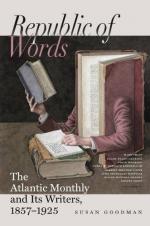2. It decreases as we pass from maritime to inland countries.
3. It decreases in the temperate zones on eastern coasts as compared with western coasts, but within the tropics it is the reverse.
4. More rain falls in mountainous than in level countries.
5. Most rain falls within the tropics.
* * * * *
The rainless regions, not deserts, are parts of Guatemala, the table-land of Mexico, the Peruvian coast, parts of Morocco, Egypt, Arabia, Persia, etc.
The electric character of the air is another subject of interest, and a leading one in Meteorology. What can be more magnificent, what more awful, than those storms of lightning and thunder which are witnessed sometimes even in our own latitudes?
Faraday, who as a chemist and philosophical writer is of the highest authority, professes to have demonstrated that one single gram of water contains as much electricity as can be accumulated in eight hundred thousand Leyden jars, each requiring to charge it thirty turns of the large machine at the Royal Institution.
It is not intended that this astounding statement should be received without some grains of allowance; but a very elegant and scientific writer, who adopts it without hesitation, adds, “We can from this crystal sphere [of water] evoke heat, light, electricity in enormous quantities, and beyond these we can see powers or forces for which, in the poverty of our ideas and our words, we have not names.”
Flashes of electricity have been detected, during warm, close weather, issuing from some species of plants. The Tuberose and African Marigold have been seen to emit these mimic lightnings. (Goethe is the authority for this.) To atmospheric electricity we doubtless owe the coruscations of the Aurora, one of the most beautiful of our meteors.
The usual forms of lightning are the zigzag or forked sharply defined,—the sheet-lightning, illuminating a whole cloud, which it seems to open,—heat-lightning, not emanating from any cloud, but apparently diffused through the air and without report. There are also fireballs which shoot across the sky, leaving a train often visible for seconds and minutes. These last, when they project any masses to the earth, are termed aerolites.
Atmospheric electricity has much to do with the distribution of rain, the precipitation of vapor, the condition of our nervous system, and, according to Humboldt, with the circulation of the organic juices. Atmospheric electricity has heretofore been a great obstacle to the success of the Magnetic Telegraph, and curiously disturbs its operation; but there has recently been invented an instrument called a Mutator, which is connected with the wires, and carries off all the disturbing influences of the atmosphere without interfering with the working current. On the other hand, artificially created electricity has led to important advances in many of the arts and sciences.




